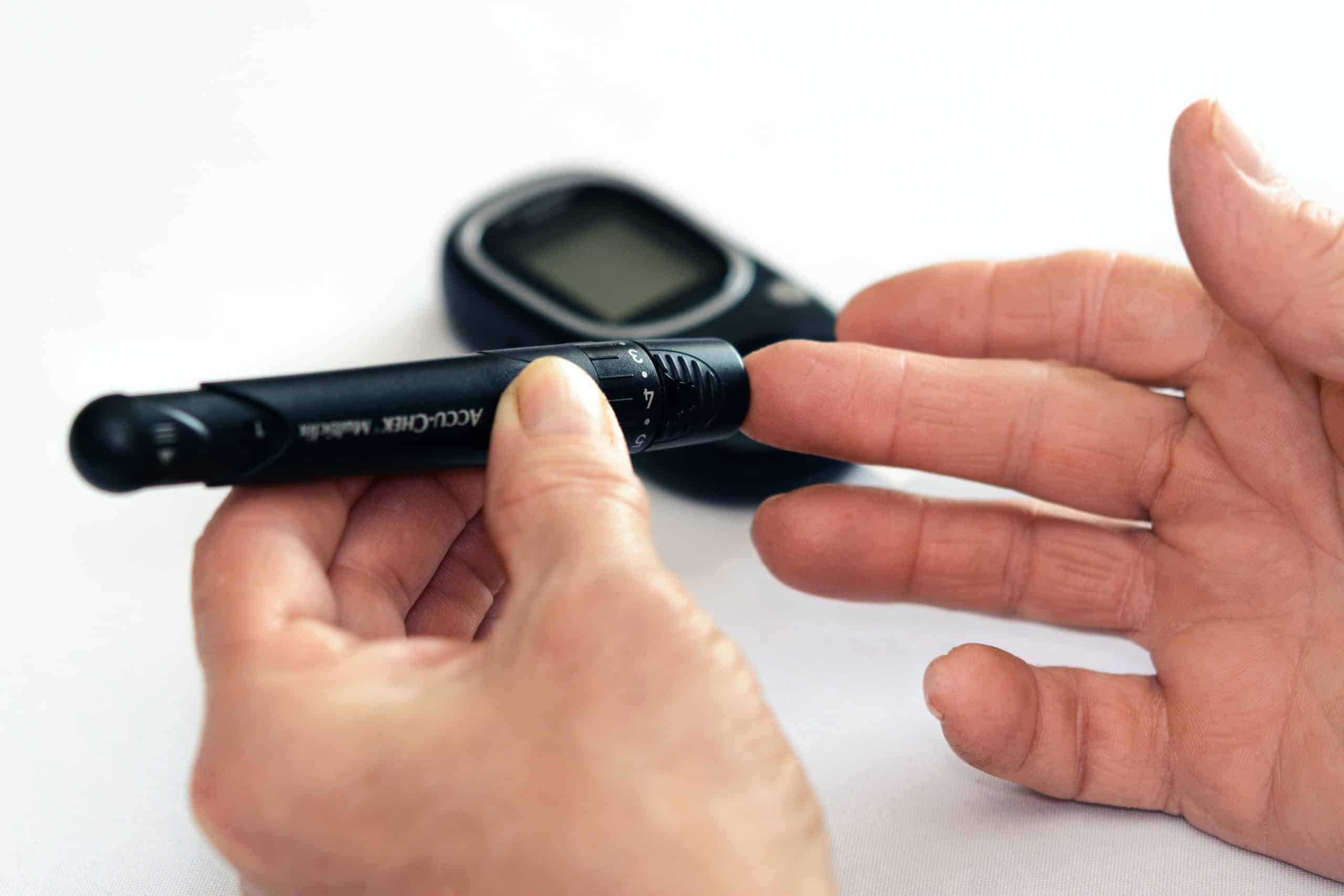Managing diabetes through diet

Diabetes is a chronic condition that affects the way your body metabolizes sugar (glucose), a significant source of fuel for your body. When you have diabetes, your body either lacks enough insulin or can’t use the insulin it has effectively, causing sugar to build up in your blood. This high blood sugar level can lead to serious health complications.
Understanding Diabetes
Diabetes is a complex health condition that affects millions of people worldwide. It’s a disorder of the metabolism—the way our bodies use digested food for growth and energy. There are different types of diabetes, but the most common ones are type 1 and type 2 diabetes.
Also to read : Does Laugh Yoga Boost Immune Health?
In type 1 diabetes, the body’s immune system destroys the cells that release insulin, leading to no insulin production. This form of diabetes is usually diagnosed in children and young adults. On the other hand, type 2 diabetes can occur at any age and is usually diagnosed in adults. In this form, your body can produce insulin, but it’s either not enough, or your body doesn’t react as it should to insulin.
Both types of diabetes lead to chronically high blood sugar levels that increase the risk of diabetes complications. However, with the right diet and lifestyle adjustments, you can manage your blood sugar and keep your diabetes under control.
Have you seen this : Do Morning Routines Aid Mental Health?
The Role of Diet in Managing Diabetes
Your diet plays a crucial role in managing your diabetes. Certain foods can raise your blood sugar levels, while others can help keep them in check. By understanding how different foods affect your blood sugar, you can create a meal plan that works for you.
Eating a balanced, healthy diet can help you manage your blood sugar levels, maintain a healthy weight, and prevent or delay complications associated with diabetes. However, it’s not just about avoiding certain foods; it’s about eating a wide variety of foods in the right amounts to ensure your body gets the necessary nutrients.
Foods to Include in a Diabetic Diet
When it comes to building a diabetes-friendly diet, there are several foods you can incorporate that won’t cause a significant spike in your blood sugar levels. These include:
- Whole grains: Grains are a good source of fiber which can slow the absorption of sugar into your bloodstream and prevent spikes in blood glucose.
- Lean proteins: Foods like skinless chicken, turkey, fish, eggs, and low-fat dairy products can help control blood sugar levels.
- Healthy fats: Monounsaturated and polyunsaturated fats help reduce levels of "bad" LDL cholesterol and increase "good" HDL cholesterol. Avocados, olives, and nuts are excellent sources.
- Fruits and vegetables: They are low in fat and calories and high in vitamins, minerals, and fiber.
- Non-starchy vegetables: These include spinach, broccoli, and green beans. They are low in carbs and calories, helping you control your blood sugar and weight.
Foods to Avoid in a Diabetic Diet
Just as there are foods that can help manage diabetes, there are also those that can exacerbate it. Foods high in saturated and trans fats, for instance, raise your blood cholesterol levels and increase your risk of heart disease. Similarly, foods high in salt can raise your blood pressure, which also increases the risk of heart disease.
Here are some foods you should limit or avoid in a diabetes-friendly diet:
- Processed foods: These foods can be high in unhealthy fats, sodium, and added sugars.
- Trans and saturated fats: These include high-fat dairy products and animal proteins, deep-fried foods, and baked goods.
- Sugary drinks: These are high in carbohydrates, which can raise blood sugar.
- High-sodium foods: Too much sodium can lead to high blood pressure.
Creating a Balanced Meal Plan
Creating a balanced meal plan is an integral part of managing diabetes. This doesn’t mean you need to create a strict diet that eliminates all of your favorite foods. Instead, it means learning how to create a balanced plate that includes a proper mix of nutrients.
The first step is to understand how foods affect your blood sugar. Carbohydrates, for example, have the most significant impact on blood sugar levels. When you eat carbs, your body breaks them down into sugars, which are absorbed into the bloodstream. This causes a rise in blood sugar levels, leading to an increase in insulin production.
This doesn’t mean you need to avoid carbohydrates completely. It means learning to select and prepare them in a way that manages your blood sugar. This can involve eating slower-digesting carbs, such as whole grains, over refined grains.
Portion control is another crucial aspect of a diabetes-friendly diet. Even healthy foods can cause blood sugar spikes if eaten in large quantities. Therefore, it’s important to monitor portion sizes to avoid overeating.
In conclusion, managing diabetes through diet involves understanding how different foods affect your blood sugar, knowing what foods to include and avoid, and learning how to create a balanced meal plan. By taking these steps, you can manage your blood sugar levels, maintain a healthy weight, and prevent or manage diabetes complications.
Physical Activity and Diabetes Management
Maintaining regular physical activity is another key aspect of managing diabetes. Exercise can lower your blood glucose levels, reduce your risk of heart disease, and help you maintain a healthy weight.
Physical activity makes your body more sensitive to insulin, allowing it to work more effectively. This, in turn, helps your cells absorb glucose, thereby lowering your blood sugar levels. Exercise also helps your muscles use blood sugar for energy and muscle contraction, which can also help keep your glucose levels in check.
The American Diabetes Association recommends that people with diabetes get at least 150 minutes of moderate-intensity aerobic exercise, such as brisk walking, every week. Strength training exercises, like weightlifting or resistance band exercises, are also recommended at least two days a week.
However, it is crucial to monitor your blood sugar before, during, and after exercise, as physical activity can lower your glucose levels and potentially lead to hypoglycemia (low blood sugar). If your blood sugar is too low or too high before you start exercising, you may need to adjust your activity level or take steps to raise or lower your blood sugar levels.
It is always advisable to consult with your health care provider before starting a new exercise regimen, especially if you have been inactive for a long period or have any other health concerns.
Understanding Glycemic Index and Diabetes
The glycemic index (GI) is a ranking system for carbohydrates based on how quickly they raise blood sugar levels. Foods with a high GI cause a rapid rise in blood sugar, whereas foods with a low GI cause a slower, more controlled increase in blood sugar.
Understanding the GI of foods can help you manage your diabetes diet more effectively. By choosing foods with a low or medium GI, you can help control your blood sugar levels and avoid sudden spikes and dips.
However, remember that low-GI foods aren’t necessarily healthier. Some low-GI foods, like chocolate or ice cream, are still high in calories and fat and should be consumed in moderation. Conversely, some high-GI foods, like potatoes or white rice, can still be part of a healthy eating plan when eaten in moderation and balanced with other foods.
The American Diabetes Association advises people with diabetes to focus on their total carbohydrate intake rather than the glycemic index alone. This is because the total amount of carbohydrates you eat has a more significant impact on blood glucose levels than the GI of a single food.
Conclusion
Managing diabetes requires a comprehensive approach. A balanced diet and regular physical activity play crucial roles in controlling blood sugar levels, maintaining a healthy weight, and preventing or managing diabetes complications. Understanding how different foods – particularly carbohydrates – affect your glucose levels is key to creating an effective eating plan. Remember, the goal isn’t to eliminate all of your favorite foods but rather to balance them in a way that aids your health.
Additionally, regular physical activity can help manage blood glucose levels and improve overall health. Make sure to consult your health care provider before embarking on a new exercise regimen.
Understanding the glycemic index can also add another tool to your arsenal for managing your diabetes diet. However, it shouldn’t be the sole focus. The total amount of carbohydrates you consume has a more significant impact on your blood glucose levels.
The journey of managing diabetes is personal and will look different for everyone. The key is to find what works best for you and to keep learning and adapting. With the right knowledge and resources, you can successfully manage your diabetes and live a healthy, fulfilling life.
